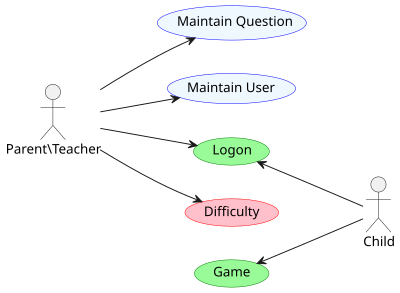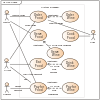An Actor in a Business Process is a person or organization who perform a Role. The role that is a user or a stakeholder responsible or accountable for one or more steps in a process or the entire process. An actor can perform multiple roles in the context of
ac·tor
ˈaktər/
noun
a person whose profession is acting on the stage, in movies, or on television. synonyms: performer, player, thespian, trouper;
a person who behaves in a way that is not genuine. “in war one must be a good actor”
a participant in an action or process. “employers are key actors within industrial relations”
Togaf defines Actor as “A person, organization, or system that has a role that initiates or interacts with activities; for example, a sales representative who travels to visit customers. Actors may be internal or external to an organization. In the automotive industry, an original equipment manufacturer would be considered an actor by an automotive dealership that interacts with its supply chain activities.” 1
Relationships
| Actor | Performs | One or More | Role |
| Actor | Performs | One or More | Business Function |

An actor[1] in the Unified Modeling Language (UML) "specifies a role played by a user or any other system that interacts with the subject."[1]
"An Actor models a type of role played by an entity that interacts with the subject (e.g., by exchanging signals and data), but which is external to the subject."[2]
"Actors may represent roles played by human users, external hardware, or other subjects. Actors do not necessarily represent specific physical entities but merely particular facets (i.e., “roles”) of some entities that are relevant to the specification of its associated use cases. A single physical instance may play the role of several different actors and a given actor may be played by multiple different instances."[2]
UML 2 does not permit associations between Actors.[2][3] The use of generalization/specialization relationship between actors is useful in modeling overlapping behaviours between actors and does not violate this constraint since a generalization relation is not a type of association.[4]
Actors interact with use cases.
References
- ^ a b "Actor". Unified Modeling Language 2.5.1. OMG Document Number formal/2017-12-05. Object Management Group Standards Development Organization (OMG SDO). December 2017. p. 647.
- ^ a b c "OMG Unified Modeling Language (OMG UML), Superstructure, V2.1.2, pp. 586–588". Archived from the original on 2010-09-23. Retrieved November 7, 2010.
- ^ "Problems and Deficiencies of UML as a Requirements Specification, s.3.2" (PDF). Archived (PDF) from the original on 17 October 2010. Retrieved November 7, 2010.
- ^ "UML 2 Specification". Retrieved July 4, 2012.
External links
- Current UML specification: "Actor". Unified Modeling Language 2.5.1. OMG Document Number formal/2017-12-05. Object Management Group Standards Development Organization (OMG SDO). December 2017. p. 647.
Related entries
References
- The Open Group – Definitions – http://pubs.opengroup.org/architecture/togaf9-doc/arch/chap03.html#tag_03_02

